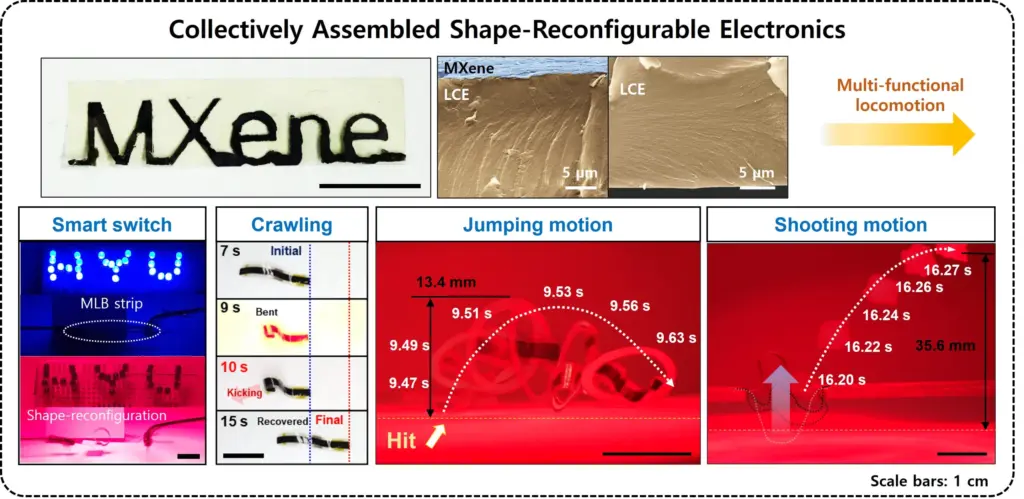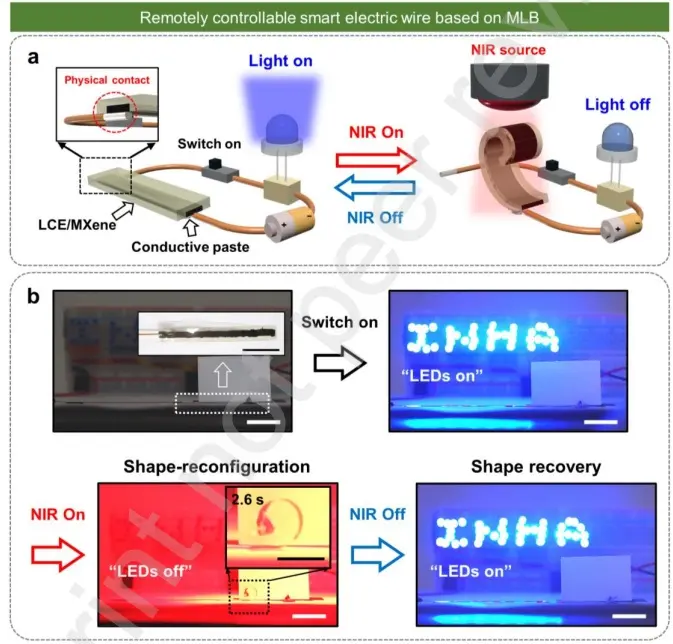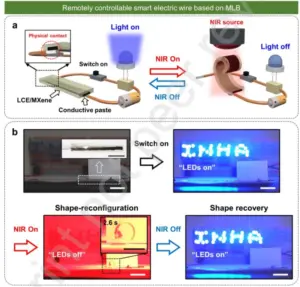Researchers at Hanyang University in Seoul, South Korea, have developed a new type of shape-changing electronic material that can twist, bend, and even jump on command. This “smart” material, composed of a liquid crystal elastomer (LCE) layered with a conductive nanomaterial called MXene, could pave the way for a new generation of dynamic, reconfigurable electronics.

In typical flexible electronics, components like wires and circuits can bend, but their shape is fixed. This limits how small and adaptable these electronics can be. The new bilayer material (LCE-MXene) overcomes these limitations through its “shape programmability.” The LCE layer can be molecularly aligned in different directions, telling it how to deform when heated.
Meanwhile, the MXene layer provides high electrical conductivity (~5300 S/cm) so the material can power electronics and respond to electrical inputs. Together, these properties allow the bilayer to reshape itself on-demand based on light, heat, or electricity.

images of remotely turning on and off the LEDs via photo-thermally driven bending of the MXene/LCE bilayer
connected in the electrical circuit. Scale bars: 1 cm. (Source: Nano Energy)
Researchers demonstrated the material’s capabilities through wireless actuation. By shining near-infrared light on the bilayer, it quickly morphed into complex 3D structures like coils and saddles. Applied voltage also triggered the shape-change. The material deformed repeatedly without losing performance or delaminating.
To showcase possible applications, the team incorporated the bilayer into a reconfigurable circuit. With light irradiation, the bilayer wire deformed to turn LED lights on and off. When multiple bilayers were connected, the collective structure crawled, rotated, and even jumped up to 15 times its height.
The researchers say these lifelike motions are inspired by biological systems. With further development, the material could be ideal for soft robotics, reconfigurable antennas, and other dynamic applications where movement and shape control are essential. So while flexible electronics start to bend, these shape-shifting circuits are poised to make electronics truly dynamic.
Reference
Cho, W., Kang, D. J., Hahm, M. J., Jeon, J., Kim, D.-G., Kim, Y. S., Han, T. H., & Wie, J. J. (2023). Multi-functional locomotion of collectively assembled shape-reconfigurable electronics. Nano Energy, 118, 108953. https://doi.org/10.1016/j.nanoen.2023.108953

